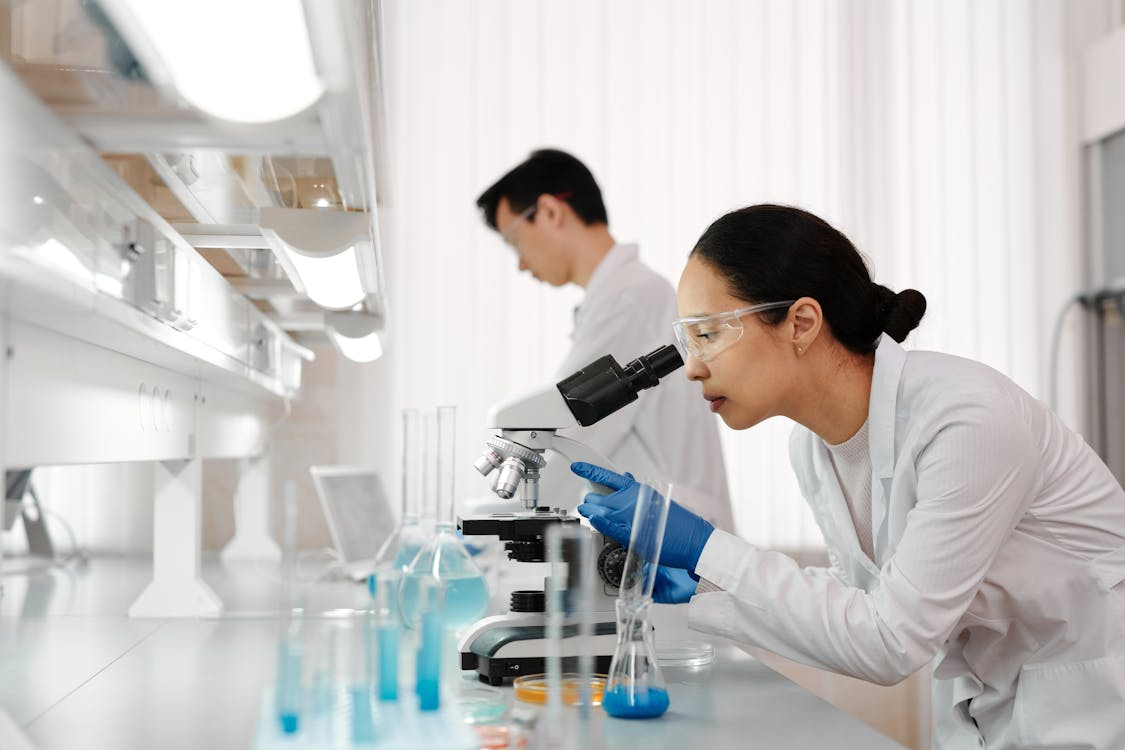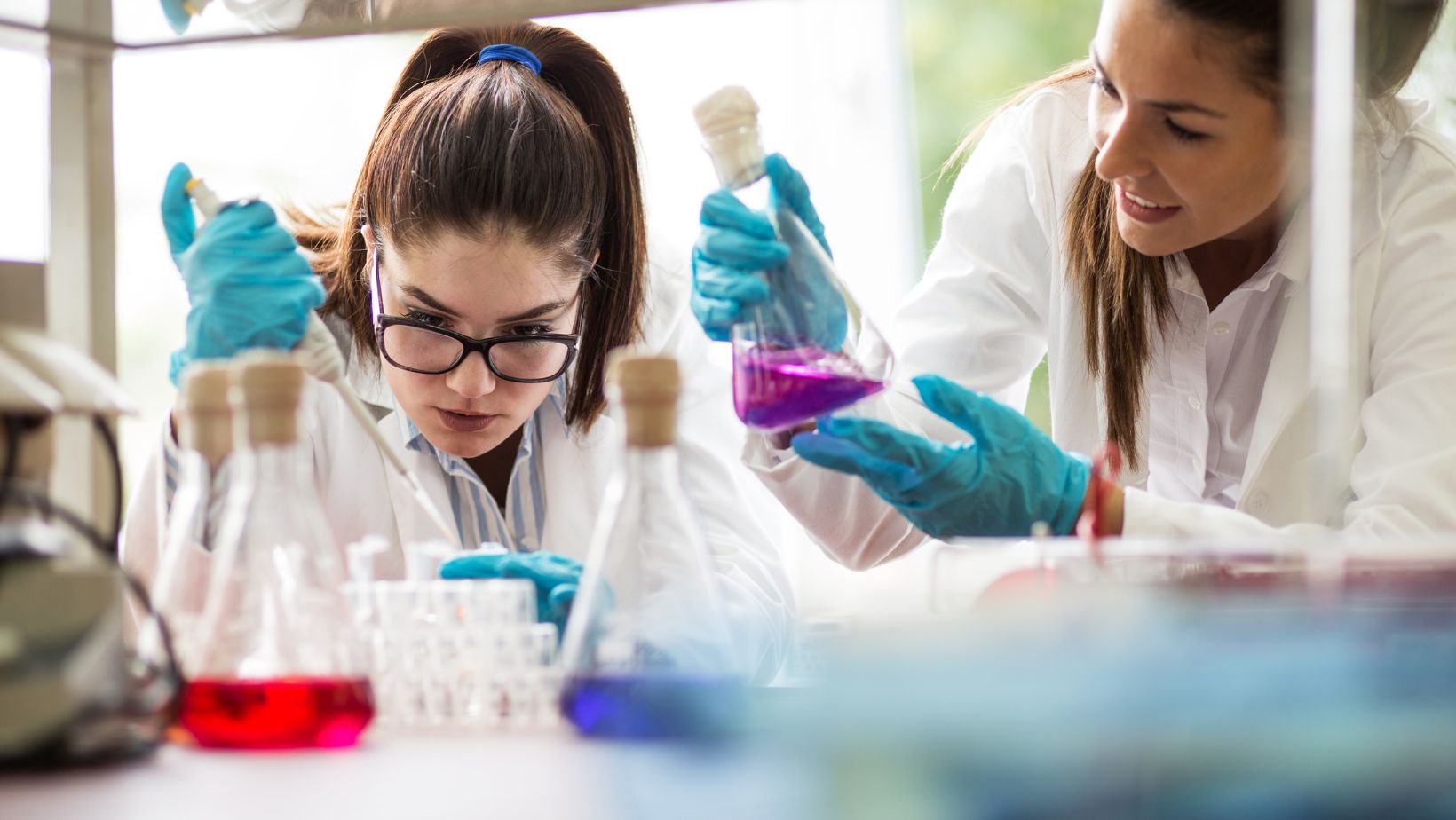
Laboratory equipment represents essential tools that scientists use to conduct experiments and research. These instruments enable precise measurement and observation of scientific phenomena with accuracy and reliability. They range from basic glassware to advanced analytical devices that power modern scientific discovery.
Lab tools vary significantly in function and complexity. They ensure accurate results and safe practices across chemistry, biology, and physics laboratories. This guide introduces students to standard laboratory equipment, covering various types and their uses, whether you’re a beginner or an advanced student.
Understanding these tools is fundamental to scientific success. Each tool plays a unique role in experiments, from mixing solutions to examining microorganisms. We’ll explore the instruments that drive scientific discovery and examine how to apply them effectively in laboratory work.
Common Lab Equipment – The Workhorses of the Lab
Laboratory instruments form the backbone of scientific discovery. They enable students and researchers to perform experiments with accuracy and safety. These tools range from mixing solutions to analyzing samples with precision and accuracy. Common lab equipment powers every laboratory, from simple glassware to sophisticated analytical machines.
Understanding their functions is crucial for success in science. Whether working in biology, chemistry, or physics, lab tools ensure reliable and reproducible results.
Here’s essential laboratory equipment and its primary uses:
- Beaker: Holds and mixes liquids during experiments
- Erlenmeyer Flask: Ideal for mixing and heating solutions safely
- Graduated Cylinder: Measures liquid volumes with high accuracy
- Pipette: Transfers precise amounts of liquids between containers
- Bunsen Burner: Provides controlled heat for various experiments
- Microscope: Magnifies specimens for detailed observation
- Test Tube: Contains small samples for chemical reactions
- Balance: Weighs materials with precision and accuracy
- Thermometer: Measures temperature during experiments
- Spectrophotometer: Analyzes light absorption properties in samples
Each piece of common lab equipment serves a specific purpose in scientific work. Beakers and flasks are designed to handle liquid solutions effectively. Pipettes ensure precise measurement of small volumes. Microscopes reveal microscopic details invisible to the naked eye. Balances measure mass accurately for quantitative analysis.
Students must learn safe handling procedures to prevent accidents and damage to equipment. Always use appropriate safety equipment when working with hot glassware or chemicals. When sourcing laboratory equipment, established suppliers like bostonmedsupply.com offer quality instruments that meet safety standards. Regular maintenance and calibration ensure continued accuracy and extend equipment lifespan.
Types of Lab Equipment – Categorized by Function
Laboratory tools are essential for conducting scientific experiments accurately and safely. They help students and researchers collect reliable data across various scientific disciplines. Laboratory equipment is typically organized by function, such as measurement, heating, or sample analysis.
Each category serves specific purposes in laboratory work. Understanding these classifications enhances experimental success and promotes safe laboratory practices.
Key categories of types of lab equipment include:
- Measuring Equipment: This category encompasses balances, pipettes, graduated cylinders, and burettes, all designed for precise measurement.
- Heating and Cooling Devices: These tools include hot plates, Bunsen burners, incubators, and refrigeration units.
- Mixing and Separation: Centrifuges, magnetic stirrers, and shakers facilitate the preparation of samples.
- Storage Tools: Test tubes, flasks, beakers, and specimen containers organize materials safely.
- Safety Equipment: Goggles, gloves, fume hoods, and lab coats protect users from hazards.
- Observation instruments, including microscopes, magnifying glasses, and spectrophotometers, enable detailed analysis.
Laboratory Materials and Disposables
Laboratory materials and disposables are essential components that support scientific work across chemistry, biology, and physics laboratories. These items range from reusable instruments to single-use disposables, ensuring accuracy and preventing contamination. Understanding their proper uses helps students conduct experiments effectively and safely.
This guide covers common laboratory materials and their specific roles in scientific research. Essential list of lab equipment and disposables include:

- Beakers hold and mix liquid solutions during experiments
- Erlenmeyer flasks are used for mixing and heating chemical solutions
- Test tubes contain small reaction samples for analysis
- Petri dishes support bacterial and cell culture growth
Disposable Materials:
- Pipette tips ensure precise, contamination-free liquid transfers
- Laboratory gloves protect hands from chemical exposure
- Filter paper separates solids from liquid solutions effectively
- Syringes deliver precise liquid volumes for experiments
Safety Materials:
- Safety goggles protect eyes from chemical splashes and debris
- Lab coats protect clothing and skin from chemical contact
Cleaning Materials:
- Specialized brushes clean glassware thoroughly after use
- Laboratory wipes remove spills and chemical residues safely
Reusable materials handle liquids during mixing, heating, and storage procedures. Test tubes hold small sample volumes for chemical reactions. Petri dishes provide sterile environments for growing microorganisms and cultures.
Disposable materials prevent cross-contamination between different experiments. Gloves and safety goggles protect users from hazardous chemical substances. Filter paper aids in separating solid particles from liquid solutions. Syringes deliver precise liquid volumes for accurate measurements.
Cleaning materials maintain laboratory hygiene and ensure the functionality of equipment. Brushes remove residues from glassware surfaces. Laboratory wipes handle spills and maintain clean work surfaces.
Proper use of laboratory materials ensures accurate experimental results. Students must dispose of used materials safely to prevent contamination and environmental hazards. Regular cleaning of reusable items extends their functional lifespan and maintains accuracy.
Laboratory Tools for Analysis and Observation
Laboratory tools are essential for scientific research and detailed experimental analysis. They enable precise measurement and observation across various scientific fields. These tools range from basic glassware to advanced analytical instruments, providing accurate and reliable results.
Each instrument serves specific functions that ensure experimental success and data accuracy.
Key analytical and observation lab equipment list includes:
- Microscope: Magnifies small specimens for detailed cellular and structural study
- Pipette: Transfers precise liquid volumes between containers with high accuracy
- Spectrometer: Analyzes light wavelengths to identify chemical compositions
- Beaker: Holds and mixes liquid solutions during chemical reactions
- Test Tube: Contains small samples for controlled chemical reactions
- Centrifuge: Separates sample components through high-speed rotational force
- Bunsen Burner: Provides controlled heat sources for various experiments
- Analytical Balance: Measures mass with precision down to milligrams
- Fume Hood: Ensures safe handling of hazardous chemical vapors
- Incubator: Maintains controlled temperature environments for biological samples
These basic lab equipment are necessary for conducting experiments successfully and safely. Scientists select equipment based on specific experimental requirements and safety considerations.
Biologists use microscopes to study cellular structures and microorganisms. Chemists use spectrometers to analyze the molecular composition and chemical properties of substances. Proper lab tools maintenance ensures long-lasting, reliable performance throughout extended use.
Regular calibration and cleaning procedures prevent measurement errors and extend the lifespan of equipment. Safety protocols are essential when operating laboratory equipment to minimize risks and hazards.
Fume hoods protect users from dangerous chemical vapors during experiments. Autoclaves sterilize instruments to prevent bacterial and viral contamination. Spectrophotometers measure the absorption of light in samples, supporting detailed chemical analysis.
PCR machines amplify DNA sequences for genetic research and analysis. These diverse tools support scientific fields ranging from molecular biology to analytical chemistry.
Using a Lab Equipment Worksheet for Learning
Laboratory instruments are vital for hands-on learning in science education. Beakers, microscopes, and other tools help students explore scientific concepts through practical application. These instruments teach essential skills in measurement, observation, and analytical thinking.
Using laboratory equipment builds student confidence in conducting experiments safely and effectively.
Types of lab equipment vary according to its specific purpose and application. Microscopes magnify tiny specimens for detailed study and observation. Pipettes accurately measure and transfer small liquid volumes with precision. Analytical balances are used to weigh substances precisely for quantitative analysis.
Bunsen burners provide controlled heat sources for safe chemical reactions. Centrifuges efficiently separate sample components, while incubators maintain optimal environments for biological cultures.
A lab equipment worksheet serves as a powerful educational tool for science instruction. It helps students identify and learn about various laboratory instruments systematically. Worksheets typically include detailed diagrams of common laboratory equipment, such as test tubes, flasks, and microscopes.
They also contain questions about the proper use of equipment and safety procedures. Standard features of lab equipment worksheets include:
- Equipment Diagrams: Visual identification exercises for common laboratory tools
- Matching Activities: Connect tools with their specific functions and applications
- Usage Questions: Explain proper equipment uses and safety procedures
- Safety Reminders: Emphasize protective equipment like goggles, gloves, and proper handling
- Critical Thinking: Apply equipment knowledge to experimental scenarios
Teachers use worksheets to assess students’ understanding of laboratory equipment. Students label equipment parts and explain their purposes in scientific experiments. Group activities with worksheets promote collaborative learning and peer instruction.
Students work together to identify how pipettes measure liquids accurately. Basic lab equipment includes scenarios that require students to select the appropriate tools for specific tasks. This approach builds problem-solving skills and practical application knowledge.
Worksheets make learning interactive by connecting theoretical knowledge to practical applications. Students gain familiarity with equipment before entering laboratory environments. This preparation significantly reduces experimental errors and builds student confidence.
Digital worksheets with interactive features add variety to learning approaches. They accommodate different learning styles and increase student engagement. Regular worksheet practice prepares students for advanced laboratory work and scientific research.
